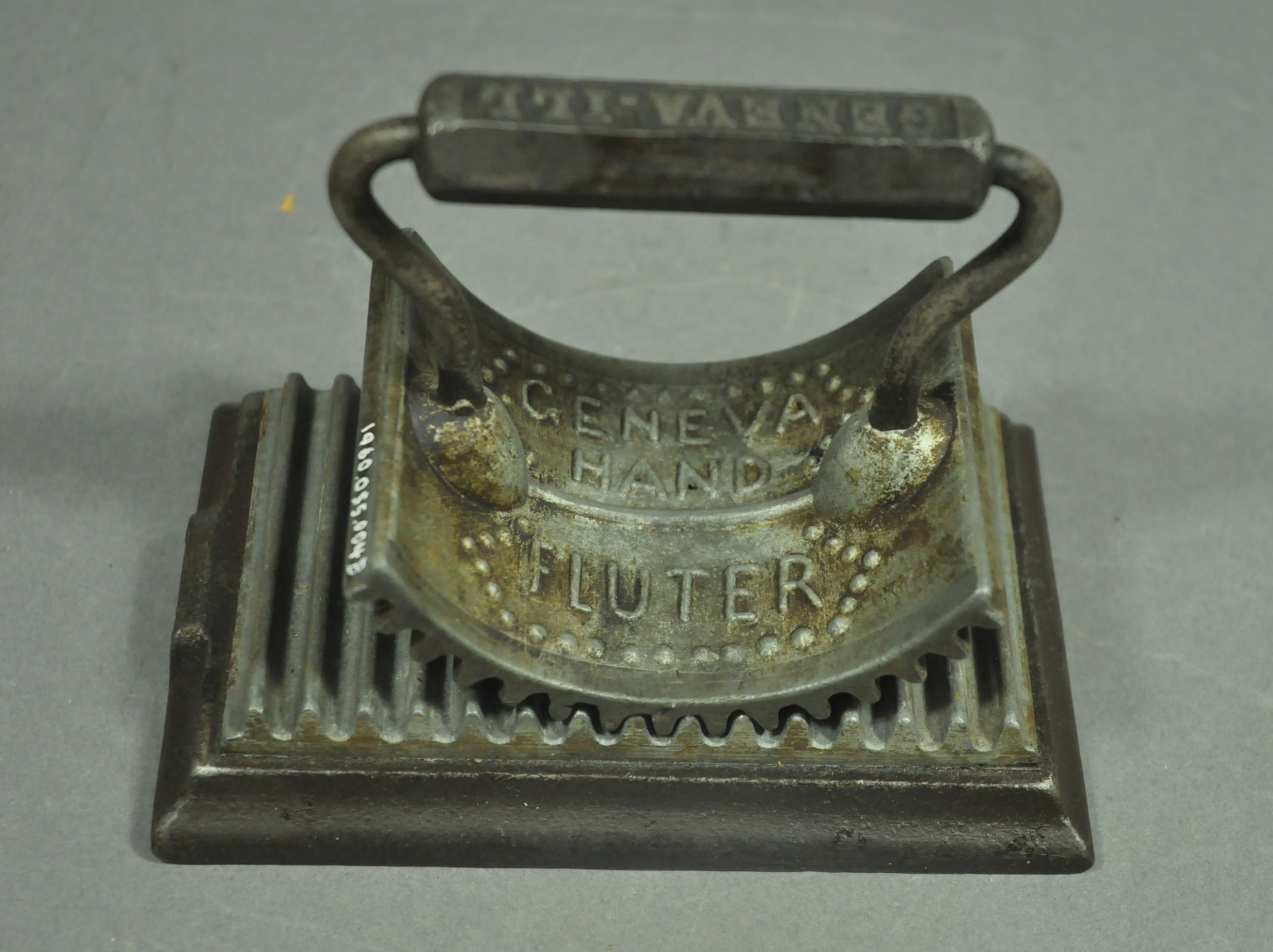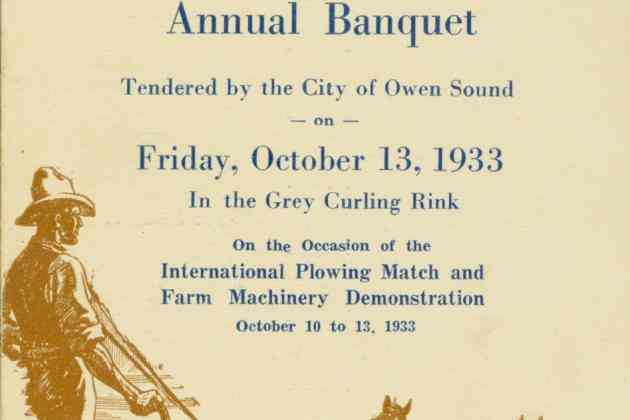An Obsolete Iron
Recently a collector came to Grey Roots to see me, as he had a cast iron, two-piece item that he had recently purchased at auction. The auctioneer didn’t know what it was. No one at the auction knew what it was. When he showed it to me, I smiled knowingly, because I knew what its purpose had been.
“Someone told me it might be a pasta maker?”, he said, “Or a meat tenderizer?”
The set has a rectangular, cast iron bed plate, that is ridged on its top side. The corresponding second part is a cast iron, handled item, with a convex-shaped, ridged bottom. It had the foundry name nicely emboss-cast on its top, so at least the collector was able to know that it was Canadian-made, by Smart & Shepherd. But he was definitely perplexed as to what it was.
It was fun to be able to let him know that it was a dressmaker’s accessory, a 19th-century ironing device (probably called a hand fluter, fluting iron, rocker-type fluter, or sometimes known as a crimping iron). They came into fashion in the late 1860s, and were produced by companies in the late 19th-century mostly, although the “Geneva Hand Fluter”, an American example that we have at Grey Roots, patented in 1866, possibly could range in its date from 1866-1920. The cast iron bed plate component would have been heated up on a wood or coal-fired stove. A narrow length of fabric would be placed on the heated bed plate, and the rocking part was rocked by one’s dominant hand, working the fabric into the ridges. This ironing work created the neatly pressed lines (creases) that would visually help a dressmaker to later create same-sized narrow pleats in the fabric when she was sewing it. In the late 1860s, 1870s, and into the 1880s, there were a lot of women’s dresses that were embellished with tightly-pleated cuff or trim pieces. The Geneva Hand Fluter we have at Grey Roots originates from a factory in Geneva, Illinois, and was kept in the past by the Bye family of Grey County. If a researcher would like to see it someday, its catalogue number is 1960.055.004ab. We also have another 1866-patented one, with a similar sort of design, called THE STAR (1983.046.001ab), from another donor.
This research request by a collector is a good example of why museums are needed to collect and document material culture items. It doesn’t take long for people to “forget” the purpose of something that was innovated in the past. Once something becomes obsolete, it tends to be quickly dismissed, and tossed onto the scrap pile of history, often misunderstood in subsequent years, and needs someone to interpret it. I wonder how many old hand fluters ended up tossed in scrap metal bins, or lost their second part? And it is so sad, that no one will ever know now who used to iron with the hand fluter that I was shown recently, as her name did not travel along with it when it went to auction. She is just another anonymous Victorian needlewoman / dressmaker, who really liked neat, precise pleats.







